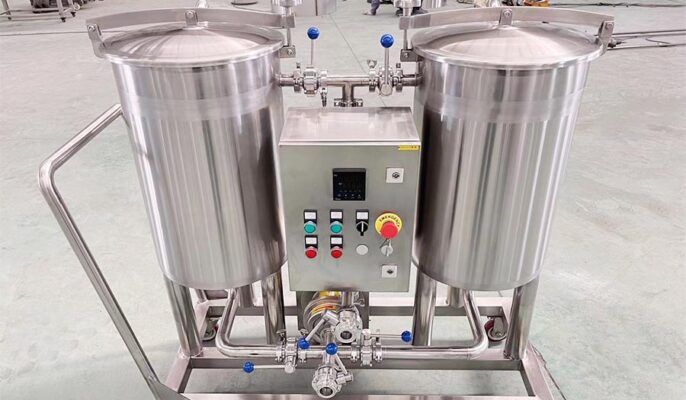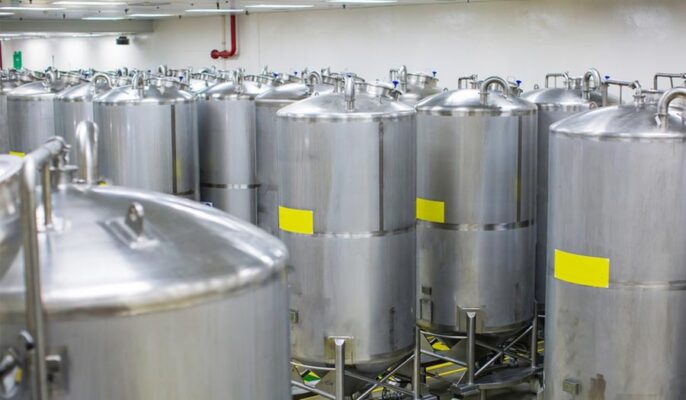A CIP system is a combination of mechanical components and equipment used to combine water, chemicals and heat to create a cleaning solution. These chemical cleaning solutions are pumped or circulated by the CIP system through other systems or equipment to clean them.
For those unfamiliar with the term CIP, it is a cleaning system that a brewery will use to clean or sanitize certain process equipment (such as pipes and tanks) without the need for . Many questions arise about these systems due to incorrect information provided by “out of the box” CIP providers.
If you are considering investing in a CIP system for your facility, it is important to ensure you are getting a reliable and up-to-date design. Your process design team should consider the needs of your operation.
What type of product do I want to clean?
This is important to understand because different applications must different levels of TACT. Different types of food and chemical soils present unique cleaning challenges.
- T time
- A action
- C-concentration
- T-Temperature
Light cleaning
The soil dissolves and does not adhere to the walls of tanks and pipes. Often, most dirt can be removed with a thorough pre-rinse. The remaining soil is dissolved with alkaline washing. Lower temperatures and fewer chemicals are required because the nature of the product soil allows the action of the fluid to remove and carry away most of the soil, and a single caustic wash cycle does the job. In most cases, a single or two tank system is enough.
Medium to heavy cleaning
Products with lower solubility must stronger detergent concentrations and higher temperatures to remove soil.

Have you worked with your chemical supplier and identified chemicals, exposure times and temperatures?
A good chemical supplier can analyze your plants’ water and soil and select a chemical that will provide the fastest, most efficient reaction to break them down. Often, they can recommend the time it takes to complete the reaction (contact time) and the optimal temperature to help the soil break down.
Are your tanks designed for CIP cleaning?
Tanks manufactured using older processes are often not suitable for spray balls for cleaning. For some of these systems, ports can be added to the tank and will work . But as with most tanks, problems with solution leakage often arise when spray balls are added to older tanks that are not suitable for cleaning in place.
Can dead space areas be eliminated?
The cleaning solution must be able to flush all pipes for cleaning. If the product can wet the surface and you can’t rinse it, it’s not being cleaned .
Does your production line have the proper slope to ensure adequate drainage?
Water remaining in the lines between cleaning steps can cause carryover and reduce cleaning effectiveness. Standing water in the system becomes a place where bacteria can begin to grow during downtime.
How often is clean-in-place required?
CIP cycles are run after processing runs that produce normal contamination, or when converting a processing line from one product to another. The frequency must be enough to ensure product safety and quality, remember that running cleaning cycles too can waste valuable time and resources.
What functions can a CIP system perform?
equipped CIP systems can be used to perform a variety of different tasks, including tank, pipeline and equipment cleaning. Customers looking to integrate a CIP system into their facility may must it to perform only one of these tasks, or all three .
Are water tanks usually hot or cold cleaned?
Tanks are usually cleaned at ambient temperature, but some situations may must higher temperatures. In these cases, maintaining a constant temperature during the cleaning cycle and regulating the temperature throughout the cooling process becomes critical and requires more programming to protect the equipment.
Is the tank pressurized when cleaning?
Depends on facility and process. Some customers prefer to pressurize the tank with carbon dioxide during the cleaning process. These situations are limited, must specialized chemicals, and need extra attention to safety. But, customers who choose not to pressurize their tanks during the cleaning process will need to have procedures in place to re-pressurize the tank if possible air absorption is identified.

Why is equipment cleaning so challenging?
Equipment cleaning can be one of the more complex tasks involved and often requires the most customization. Equipment often has unique requirements that must special attention to CIP formulations. Whether it’s special programming, handshaking between systems, or HMI step confirmation during a cycle, Micet can help optimize the solution.
Does cleaning up residue have any impact?
influential. This information determines which type (or types) of cleaner or cleaning solution is needed. Certain organic materials must alkaline cleaning of the detergent tank, while other non-organic materials may must acid cleaning. Some systems may even must a combination of both. Attention must be paid to the concentration and temperature of the cleaning solution to optimize performance.
What utilities are required to run a CIP system?
Generally speaking, a functional CIP system requires a water source, chemical source, steam and condensate returns (for heating), and drains (both gravity drains and power drains). Each of these factors plays an important role in determining the size and total number of storage tanks required and the size of the piping required.
Can the CIP system guarantee 360° cleaning without dead ends?
When cleaning, the cleaning fluid must be able to completely flush all pipes and equipment. If the brewery equipment cannot be flushed, some cleaning fluid may remain in the equipment, affecting next brewing operations.
Clean-in-place systems are essential equipment in many processing facilities. If your company needs a CIP system, you can consult micet’s engineers. We provide end-to-end equipment solutions including design, manufacturing, installation and technical support to ensure you get the CIP system you need for your sanitary process application.




